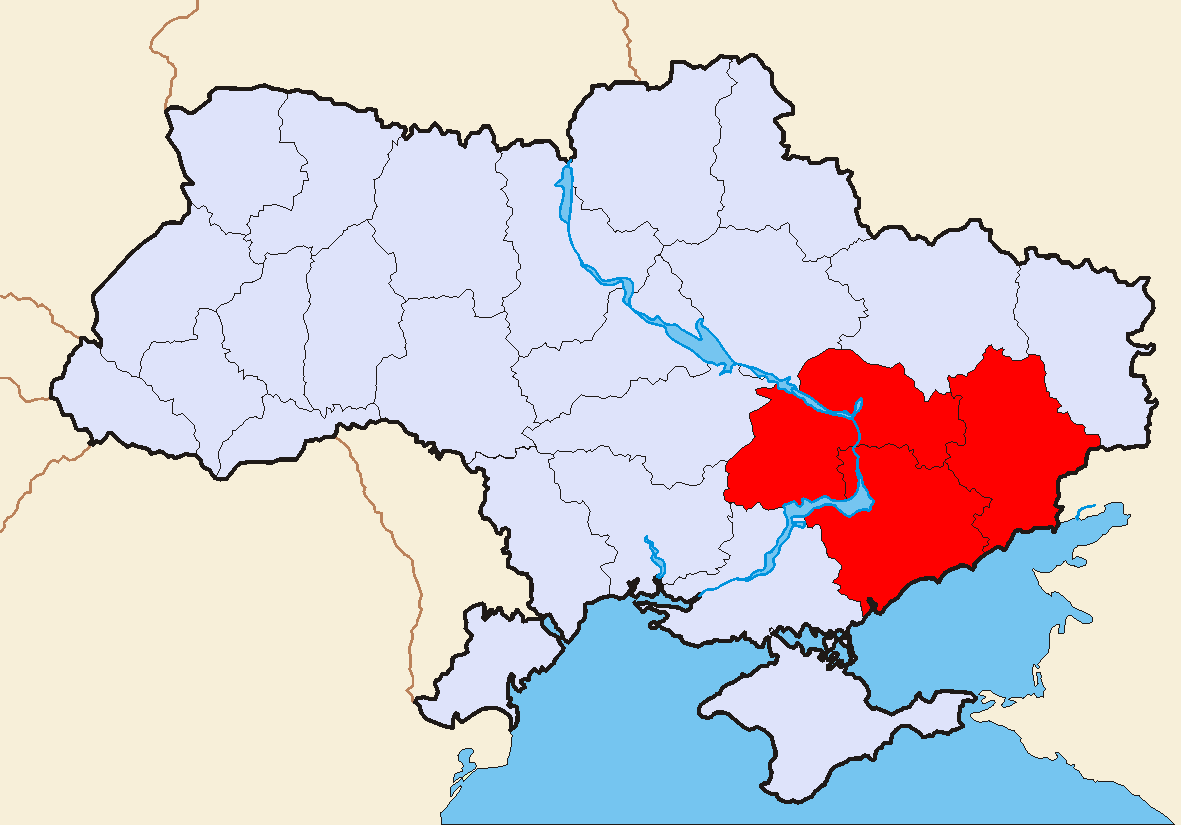Makhnovshchina (1918–1921): Difference between revisions
More languages
More actions
mNo edit summary Tag: Visual edit |
No edit summary Tag: Visual edit |
||
| (4 intermediate revisions by 3 users not shown) | |||
| Line 1: | Line 1: | ||
{{Infobox country|name= | {{Infobox country|name=Makhnovshchina|native_name=Махновщина|image_flag=Free Territory Flag.png|year_start=1918|year_end=1921|motto=Власть рождает паразитов. Да здравствует анархия!|englishmotto=Power breeds parasites. Long live anarchy!|anthem=Розпрягайте, хлопці, коні<br />Unhitch the horses, boys|capital=Huliaipole|government_type=Stateless communes (''De jure'')<br>Warlordism (''De facto'')|leader_title1=Leader|leader_name1=[[Nestor Makhno]]|legislature=[[Regional Congress of Peasants, Workers and Insurgents]]|area_km2=~75,000|population_estimate=~7,500,000|population_density_km2=~100|currency=Various|today=[[Ukraine]], [[Donetsk]]}} | ||
The '''Ukrainian Free Territory''', also know as '''Makhnovshchina''' (Ukrainian: Махновщина) was a | The '''Ukrainian Free Territory''', also know as the '''Makhnovshchina''' (Ukrainian: Махновщина, ''Makhno phenomenon'') was a self-proclaimed stateless society that existed during the [[Russian Civil War]] in the eastern part of Ukraine; however, it was effectively a bandit state headed by [[Nestor Makhno]]. Its lack of true statelessness can be attributed to its [[Feudalism|feudalistic]] economy.<ref>{{Citation|author=Colin Darch|year=2020|title=Nestor Makhno and Rural Anarchism in Ukraine, 1917-1921|title-url=https://books.google.com/books/about/Nestor_Makhno_and_Rural_Anarchism_in_Ukr.html?id=epyFwwEACAAJ&source=kp_book_description|publisher=Pluto Press|isbn=9780745338880|trans-lang=English}}</ref> | ||
== Conflict with Bolsheviks == | == Conflict with Bolsheviks == | ||
[[File:UFT zone of influence map 1919.gif|left|thumb|Makhnovshchina zone of influence in 1919]] | |||
Makhno demanded weapons from the [[Bolsheviks]] to fight the [[White Army]] but refused to allow [[Russian Soviet Federative Socialist Republic (1917–1991)|Soviet]] grain collectors into the region.<ref>{{Citation|author=Arthur Adams|year=1963|title=Bolsheviks in the Ukraine|city=New Haven|publisher=Yale University Press}}</ref> On 7 May 1919, Ukrainian guerrilla leader [[Nikifor Grigoryev]] formed an alliance with the Whites and mutinied against the [[Workers' and Peasants' Red Army|Red Army]]. Makhno was initially neutral but joined the rebellion on 25 May.<ref>{{Citation|author=Michael Palij|title=The Anarchism of Nestor Makhno}}</ref> The rebellion weakened the Red Army and allowed [[Anton Denikin]]'s White Guards to take control of most of Ukraine. | Makhno demanded weapons from the [[Bolsheviks]] to fight the [[White Army]] but refused to allow [[Russian Soviet Federative Socialist Republic (1917–1991)|Soviet]] grain collectors into the region.<ref>{{Citation|author=Arthur Adams|year=1963|title=Bolsheviks in the Ukraine|city=New Haven|publisher=Yale University Press}}</ref> On 7 May 1919, Ukrainian guerrilla leader [[Nikifor Grigoryev]] formed an alliance with the Whites and mutinied against the [[Workers' and Peasants' Red Army|Red Army]]. Makhno was initially neutral but joined the rebellion on 25 May.<ref>{{Citation|author=Michael Palij|title=The Anarchism of Nestor Makhno}}</ref> The rebellion weakened the Red Army and allowed [[Anton Denikin]]'s White Guards to take control of most of Ukraine. | ||
== Anti-Semitism == | == Anti-Semitism == | ||
Makhno himself was not an [[Anti-Semitism| | Makhno himself was not an [[Anti-Semitism|antisemite]], but he recruited followers of Grigoryev who had been involved in pogroms. Grigoryev himself had organized pogroms in the summer of 1919 that killed roughly 6,000 Jews.<ref>{{Citation|author=Various authors|title=Encyclopaedia Judaica|page=699–700|volume=13}}</ref> | ||
== References == | == References == | ||
<references /> | <references /> | ||
[[Category: | [[Category:Anarchist communities]] | ||
[[Category:History of Ukraine]] | |||
Latest revision as of 10:48, 28 August 2024
| Makhnovshchina Махновщина | |
|---|---|
| 1918–1921 | |
|
Flag | |
Motto: Власть рождает паразитов. Да здравствует анархия! Power breeds parasites. Long live anarchy! | |
Anthem: Розпрягайте, хлопці, коні Unhitch the horses, boys | |
| Capital | Huliaipole |
| Government | Stateless communes (De jure) Warlordism (De facto) |
• Leader | Nestor Makhno |
| Legislature | Regional Congress of Peasants, Workers and Insurgents |
| History | |
• Established | 1918 |
• Dissolution | 1921 |
| Area | |
• Total | ~75,000 km² |
| Population | |
• Estimate | ~7,500,000 |
• Density | ~100 km² |
| Currency | Various |
| Today part of | Ukraine, Donetsk |
The Ukrainian Free Territory, also know as the Makhnovshchina (Ukrainian: Махновщина, Makhno phenomenon) was a self-proclaimed stateless society that existed during the Russian Civil War in the eastern part of Ukraine; however, it was effectively a bandit state headed by Nestor Makhno. Its lack of true statelessness can be attributed to its feudalistic economy.[1]
Conflict with Bolsheviks[edit | edit source]

Makhno demanded weapons from the Bolsheviks to fight the White Army but refused to allow Soviet grain collectors into the region.[2] On 7 May 1919, Ukrainian guerrilla leader Nikifor Grigoryev formed an alliance with the Whites and mutinied against the Red Army. Makhno was initially neutral but joined the rebellion on 25 May.[3] The rebellion weakened the Red Army and allowed Anton Denikin's White Guards to take control of most of Ukraine.
Anti-Semitism[edit | edit source]
Makhno himself was not an antisemite, but he recruited followers of Grigoryev who had been involved in pogroms. Grigoryev himself had organized pogroms in the summer of 1919 that killed roughly 6,000 Jews.[4]
References[edit | edit source]
- ↑ Colin Darch (2020). Nestor Makhno and Rural Anarchism in Ukraine, 1917-1921. Pluto Press. ISBN 9780745338880
- ↑ Arthur Adams (1963). Bolsheviks in the Ukraine. New Haven: Yale University Press.
- ↑ Michael Palij. The Anarchism of Nestor Makhno.
- ↑ Various authors. Encyclopaedia Judaica, vol. 13.

